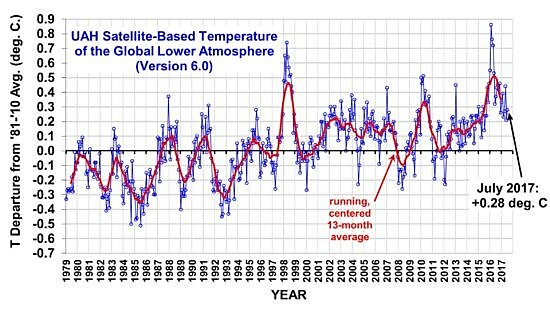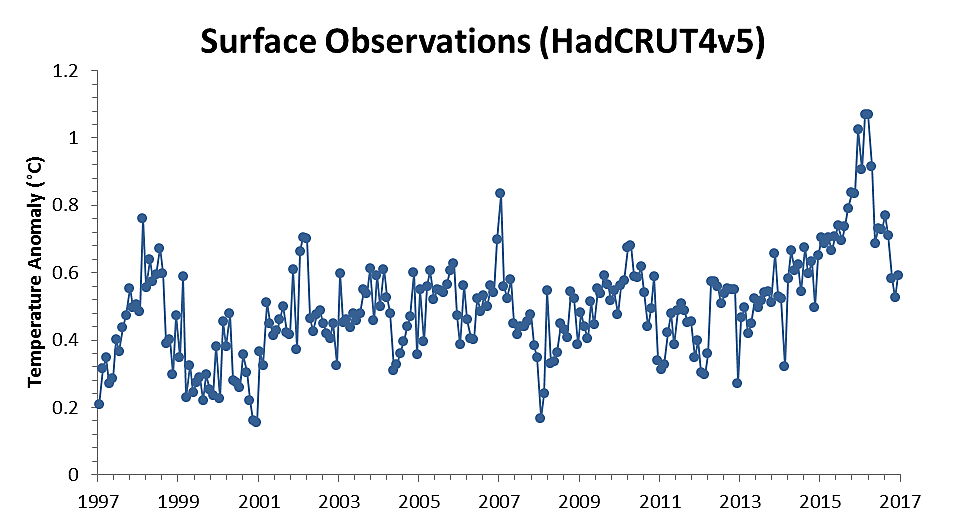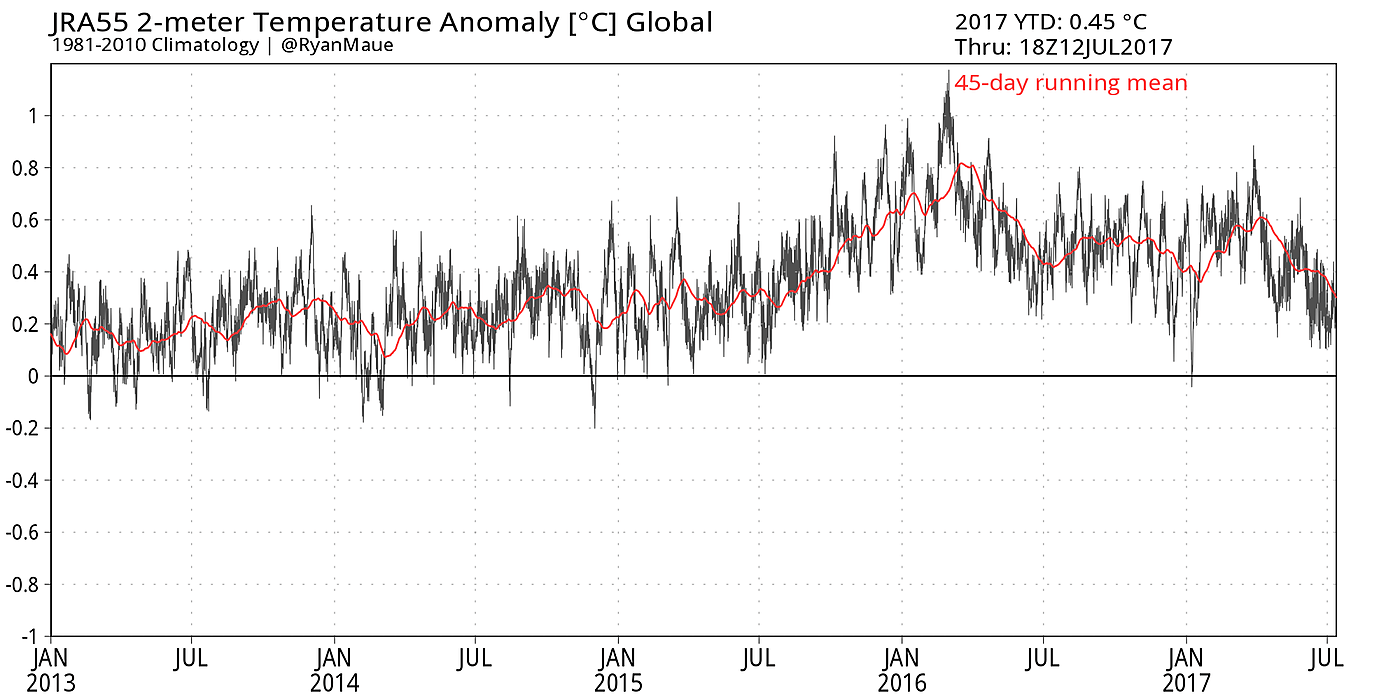As expected, and thanks to the big 2015–6 El Niño, the National Oceanic and Atmospheric Administration (NOAA) has announced that 2016 is the warmest year in their 150-year long global surface temperature record. They didn’t mention that there are signs that global average temperatures are headed back to pre-El Niño values, which may put them near the range of the long “pause” in warming beginning in 1997 that ended with the recent El Niño.
There are several sources showing this. Here’s the satellite data from the University of Alabama-Huntsville through last month:
Temperatures have fallen to within approximately 0.15⁰C of the average since the end of the last (1998) big El Niño and the beginning of the recent one. These are “bulk” data for the lower atmosphere.
You can see similar behavior in the surface record from the University of East Anglia:
In this record, the “pause” from mid-1997 through 2013 is obvious. It will be interesting to see where this record settles out, as the early 2017 data look very “pause‑y”.
We are also suffering from the problem that NOAA’s (the folks who made today’s announcement) record is the “pause-buster” version that used a new record of sea-surface temperatures (designated ERSSTv4) that became progressively warmer, beginning in 1998, compared to its predecessor (ERSSTv3). It also raised very good buoy temperatures to match very bad ship intake tube temperatures. Just inside a large hunk of conductive metal sitting in the sun isn’t a good place to take the water temperature.
One increasingly popular recent surface temperature history is “reanalysis” data in which temperatures are transformed onto a tight latitude/longitude grid that provides a spatially “level playing field”, bypassing the problems that occur as weather stations move, or go off or on-online. You can also see the temperature peak here, and that we are approaching pre-El Niño values.
It looks like the warm party is breaking up.



